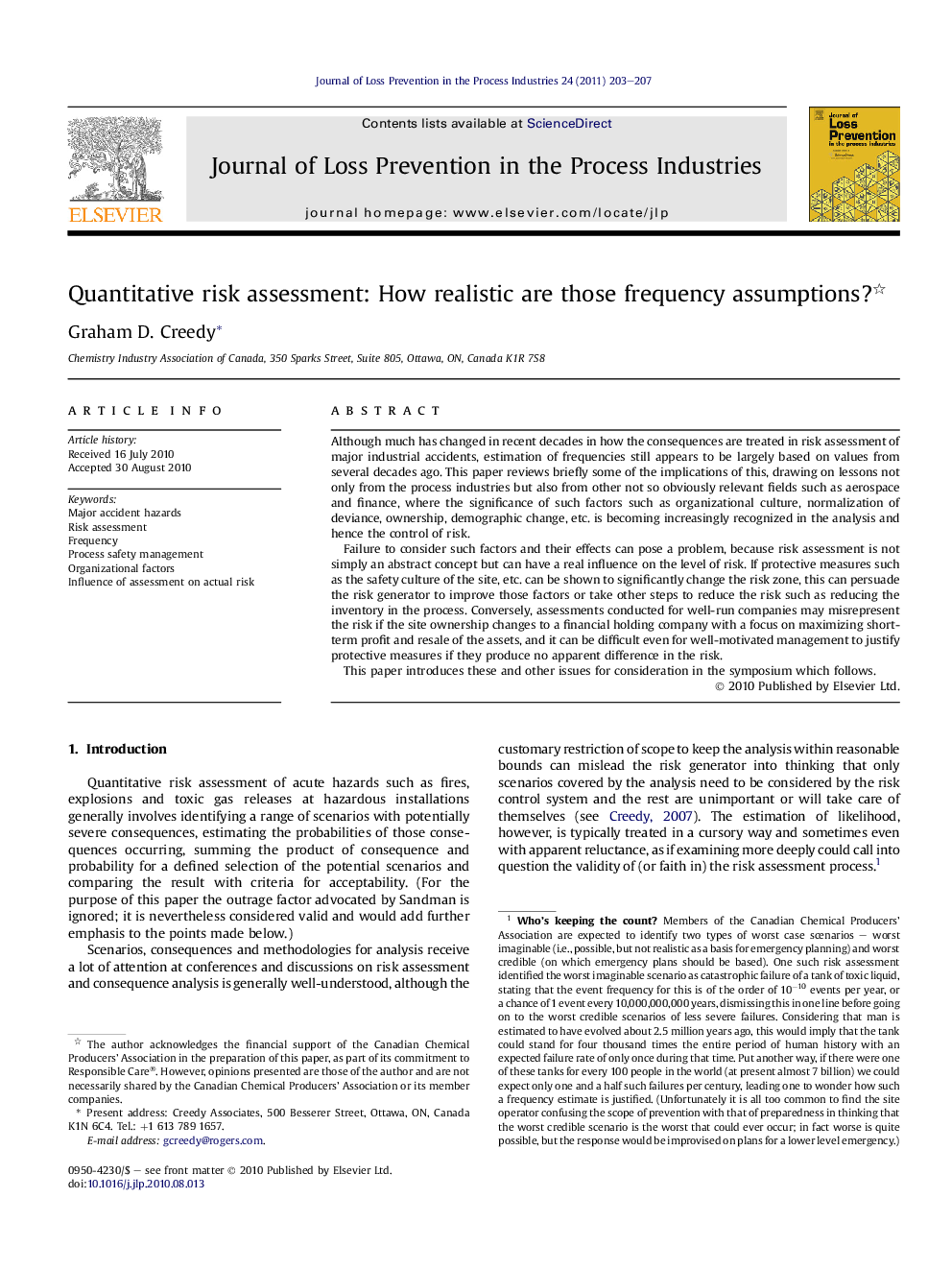| Article ID | Journal | Published Year | Pages | File Type |
|---|---|---|---|---|
| 586321 | Journal of Loss Prevention in the Process Industries | 2011 | 5 Pages |
Although much has changed in recent decades in how the consequences are treated in risk assessment of major industrial accidents, estimation of frequencies still appears to be largely based on values from several decades ago. This paper reviews briefly some of the implications of this, drawing on lessons not only from the process industries but also from other not so obviously relevant fields such as aerospace and finance, where the significance of such factors such as organizational culture, normalization of deviance, ownership, demographic change, etc. is becoming increasingly recognized in the analysis and hence the control of risk.Failure to consider such factors and their effects can pose a problem, because risk assessment is not simply an abstract concept but can have a real influence on the level of risk. If protective measures such as the safety culture of the site, etc. can be shown to significantly change the risk zone, this can persuade the risk generator to improve those factors or take other steps to reduce the risk such as reducing the inventory in the process. Conversely, assessments conducted for well-run companies may misrepresent the risk if the site ownership changes to a financial holding company with a focus on maximizing short-term profit and resale of the assets, and it can be difficult even for well-motivated management to justify protective measures if they produce no apparent difference in the risk.This paper introduces these and other issues for consideration in the symposium which follows.
